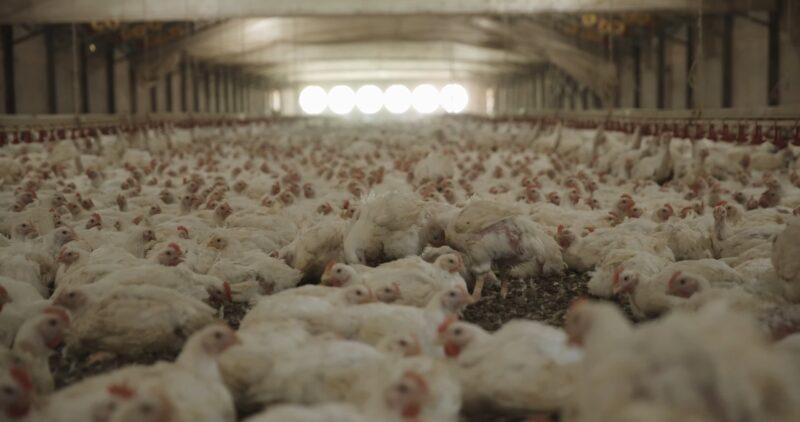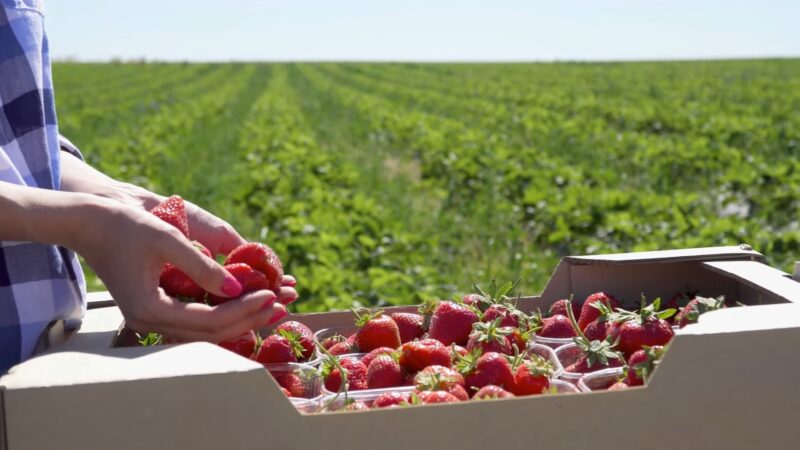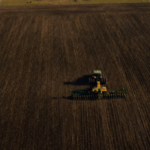Commercial agriculture is quite different from traditional farming, where farmers grow only enough food for their families. It is all about big farming. It’s about growing lots of crops and raising many animals to sell them in markets. The main goal is to make money and feed many people.
In commercial farming, they want to make things huge, efficient, and profitable. They use modern methods and tools to grow as much as possible and not waste anything. Today we’ll explore this area, explaining its main features, telling you what’s good and not so good about it, and why it matters.
We want to make this complicated topic easy for everyone to understand.
What does it mean?
Commercial agriculture is a type of farming in which agricultural operations are conducted predominantly with the aim of selling the products in the market for profit. This form of farming contrasts significantly with subsistence farming, where the primary aim is to produce enough to feed the farmer and his family.
Commercial farming is oriented towards producing high-quality, high-yield crops or livestock for sale on a large scale. The rise of commercial agriculture has played an integral role in the growth and development of societies worldwide.
It has not only facilitated the growth of urban areas by ensuring a steady food supply but also reduced the proportion of the population needed to work on farms. Consequently, it has significantly increased food production levels, thus making food readily available and affordable.
Commercial agriculture goes beyond mere quantity; it’s also about specialization and efficiency, contributing to a more productive and sustainable agricultural system, a concept we will explore further in the next paragraphs.
Why is it important?
Commercial agriculture’s importance cannot be understated. It forms the backbone of the economy of many countries and plays a crucial role in ensuring food security for the burgeoning global population. It contributes substantially to national incomes and sustains millions of livelihoods.
By enabling farmers to produce more food and other agricultural products than their immediate families need, commercial agriculture has facilitated the creation of surplus goods for trade and sale.
This surplus not only feeds the global population but also fuels the economy by providing exports, creating job opportunities, and offering raw materials for other industries such as textiles and biofuel production.
Moreover, commercial agriculture is essential for a country’s development. By increasing agricultural productivity, it allows fewer people to feed the rest of the population, liberating individuals to work in other sectors. This labor shift promotes economic diversification and growth, contributing to poverty reduction, and raising living standards.
Types of Commercial Agriculture
Crop Cultivation

Crop cultivation in commercial agriculture involves the large-scale growth of crops for sale. This type of farming generally focuses on one or a few crops at a time, with the choice of crop often being influenced by factors like the region’s climate, soil fertility, market demand, and the cost of production.
Crop cultivation can take numerous forms, including monoculture, where farmers grow a single crop year after year on the same land, and polyculture, where multiple crops are grown together.
The cultivated crops range from cereal crops like corn, wheat, and rice, which form the staple diet of many cultures, to cash crops like cotton, tobacco, and sugarcane, which bring in substantial income. Thanks to technological advancements, farmers can now grow crops year-round, boosting production and profitability.
However, such intensive farming practices also have their drawbacks, such as soil degradation, increased vulnerability to pests and diseases, and a heavy reliance on chemical fertilizers and pesticides.
Livestock Rearing
Commercial livestock rearing involves raising animals on a large scale for products such as meat, eggs, and milk. This type of commercial agriculture encompasses a wide range of animals, including cattle, poultry, sheep, and pigs.
The farms can range from small, family-run operations to massive factory farms, also known as concentrated animal feeding operations (CAFOs), that house thousands of animals.
While commercial livestock rearing can be highly profitable and contribute significantly to food security by providing high-quality proteins, it also presents serious environmental and welfare challenges.
Factory farming, in particular, has been criticized for its poor living conditions for animals, high use of antibiotics, contribution to greenhouse gas emissions, and significant water usage.
What are the Challenges?
Despite its advantages, commercial agriculture isn’t without its challenges.
Environmental Concerns
This type of farming has long been under scrutiny for its environmental impact.
| Environmental Impact | Description |
|---|---|
| Soil Degradation | Intensive farming practices can lead to soil erosion and loss of soil fertility. Overuse of chemical fertilizers can alter the natural composition of the soil, making it less productive over time. |
| Water Usage | Commercial agriculture is a major consumer of freshwater resources. Irrigation for farming accounts for about 70% of the world’s freshwater use, leading to water scarcity in some regions. |
| Pollution | The use of synthetic fertilizers, pesticides, and herbicides can lead to water and soil pollution. These chemicals can leach into groundwater or run off into water bodies, harming aquatic ecosystems and contaminating drinking water sources. |
| Biodiversity Loss | Intensive farming often involves the cultivation of a single crop (monoculture), leading to a loss of biodiversity. This can make ecosystems more vulnerable to pests and diseases and can disrupt local wildlife. |
| Deforestation | Commercial agriculture is a major driver of deforestation, particularly in the tropics. Forests are often cleared to make way for large-scale plantations, such as palm oil or soy, leading to a loss of biodiversity and contributing to climate change. |
| Climate Change | Agriculture contributes to climate change in several ways, including deforestation, the release of greenhouse gases like methane from livestock, and nitrous oxide from fertilized fields. Agriculture, forestry, and other land use activities accounted for 24% of total global greenhouse gas emissions in 2017. |
| Waste Generation | Intensive livestock farming, or factory farming, produces large amounts of waste, which can pollute the air and water if not properly managed. |
However, there’s growing recognition of these problems within the agricultural community. Many farmers and agricultural organizations are now working towards more sustainable practices.
These include the use of organic farming methods, which eschew synthetic inputs, integrated pest management, which minimizes pesticide use, and regenerative agricultural techniques, which aim to restore and enhance the natural environment.
Ethical Issues

Alongside environmental concerns, commercial agriculture also faces ethical challenges, particularly in the realm of livestock rearing.
Animal welfare is a significant issue, with concerns about the conditions in which animals are kept, their quality of life, and the methods used in their slaughter. In many large-scale farming operations, animals are kept in confined spaces with little to no access to outdoor areas.
These cramped conditions can lead to health issues and high-stress levels among the animals, affecting their welfare and the quality of the products derived from them. In response to these issues, there have been pushes for more humane practices in commercial agriculture, such as free-range farming and the promotion of animal welfare standards.
These issues highlight the need for balance in commercial agriculture—between the quest for efficiency and profitability, and ethical and environmental considerations.
Innovations
Despite its challenges, this type of farming is not static. Innovations continue to shape this sector, offering new solutions to old problems.
Technological Advancements
Technological advancements are revolutionizing commercial agriculture. From the use of drones for crop monitoring to precision agriculture techniques that allow farmers to optimize their use of resources, technology is making farming more efficient and sustainable.
Digital tools like satellite imaging and GPS are being used to gather detailed information about crops, soil conditions, and weather patterns, allowing farmers to make informed decisions about planting, fertilizing, and harvesting.
Moreover, the development of high-tech machinery has streamlined various agricultural tasks, reducing labor costs and increasing efficiency. Biotechnology is another exciting area of advancement, with genetically modified crops offering higher yields, resistance to pests and diseases, and better nutritional profiles.
However, these technologies also raise concerns about biodiversity, food sovereignty, and the corporate control of agriculture.
Sustainable Practices

In response to the environmental and ethical challenges posed by commercial agriculture, there’s a growing trend towards more sustainable farming practices.
These include organic farming, which shuns synthetic inputs; agroecology, which integrates ecological principles into farming; and regenerative agriculture, which focuses on improving soil health and biodiversity.
These practices aim not just to reduce the harm caused by farming, but also to actively improve the environment and ensure the long-term viability of farming. They represent an exciting new frontier in commercial agriculture, offering a way to feed the world without compromising our planet or our values.
FAQs:
What is the impact of commercial agriculture on population growth?
This type of farming has played a significant role in feeding growing populations. Between 1930 and 2000, U.S. agricultural productivity rose by an average of about 2 percent annually, causing food prices to decrease.
What is holistic management?
Holistic management was originally developed for reversing desertification. Holistic planned grazing is similar to rotational grazing but accentuates the four principles of the water cycle, the mineral cycles (including the carbon cycle), energy flow, and ecology.
What is pasture cropping?
Pasture cropping involves planting grain crops directly into grassland without first applying herbicides. The perennial grasses form a living mulch understory to the grain crop, eliminating the need to plant cover crops after harvest.
What is aquaculture in the context of commercial agriculture?
Aquaculture is the cultivation of the natural products of water (fish, shellfish, algae, seaweed, and other aquatic organisms). Intensive aquaculture takes place on land using tanks, ponds, or other controlled systems, or in the ocean, using cages.
What is the role of terracing?
In agriculture, a terrace is a leveled section of a hilly cultivated area, designed as a method of soil conservation to slow or prevent the rapid surface runoff of irrigation water. This method is often used in hilly areas to make the land suitable for farming.
Conclusion
To sum up, while commercial agriculture is not without its problems, it is a dynamic and vital field that will continue to evolve in response to our changing needs and values. As consumers, we all have a role to play in shaping this evolution toward a more sustainable and equitable food system.
Although this is not a perfect system, it has the potential to evolve positively if we all take responsibility and embrace our roles as conscious consumers. By nurturing a more sustainable and equitable food system, we can cultivate a brighter future for both the planet and its inhabitants.


